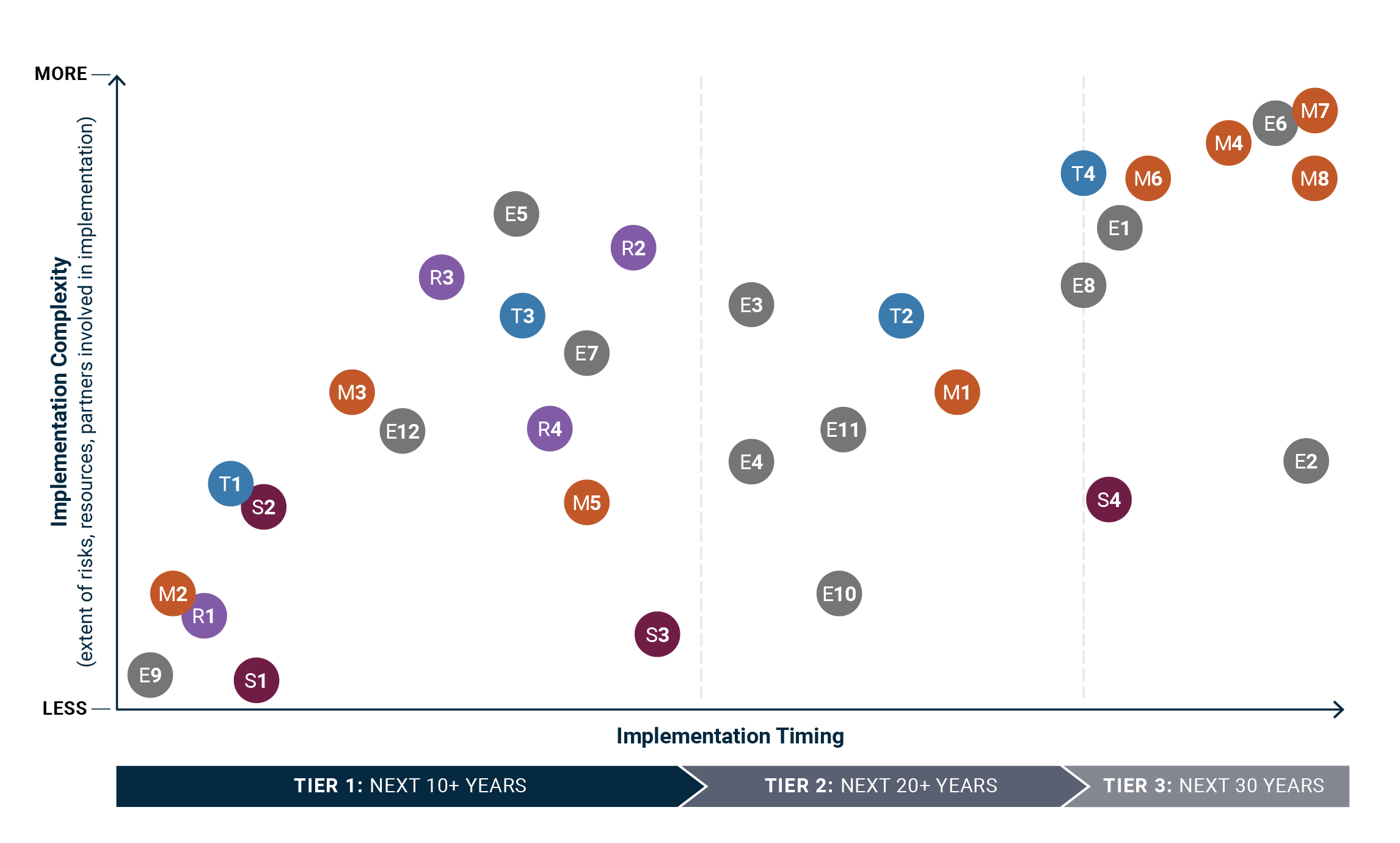
To prepare NCDOT for the potential opportunities and uncertainties in the alternative futures, the plan proposes eight strategies, each aligning with the five plan objectives, aimed at providing a responsive, diverse and inclusive transportation system. These strategies were developed using feedback from the public, stakeholders, partners and NCDOT leaders.
Each of the eight strategies includes four actions that help carry out the plan objectives for a total of 32 actions. The actions propose specific planning, policy and partnership recommendations to prepare North Carolina’s transportation system for future change. Some of the actions are already underway while others require additional evaluation to determine the best approach.
Each of the 32 actions brings unique opportunities and challenges when it comes to implementation. Four primary components of implementation decisions were considered as part of the process to develop recommendations:
- Readiness – What is the extent of technological, engineering, or environmental challenges, or does the action require new laws or policies to enable successful implementation?
- Risk – How could the implementation process fail or benefits not be fully realized? For example, is the action heavily reliant on uncertain funding sources, do elected officials play a key role in building support, or are there high uncertainties in the technology required or the user reaction to implementation?
- Resources – What is the magnitude of total NCDOT investment required to implement? This includes capital expenses, labor resources and expertise.
- Partners – To what extent does NCDOT control implementation, and what traditional and non-traditional partners may need to be involved?
For each action, NCDOT subject matter experts worked through a process to rate the level of readiness, risk, resources and partnerships. The team followed a simple approach to organize each action into the following two-dimensional matrix that compares implementation timing to implementation complexity. Timing takes into account readiness and resources while complexity takes into account risk and partners.
There are 16 Tier 1 actions representing those with the highest potential for implementation with measurable benefits over the next 10 years. Beyond then, both resources and needs are very difficult to predict. Tier 2 actions look toward 2040 and consider what NCDOT and its partners could reasonably plan to implement in the face of uncertainty and available resources. Tier 3 actions look out even further to 2050, to prepare for substantial and more complex changes to manage and deliver transportation services.

The specific recommended actions can be found in the
NC Moves 2050 Plan Report.
Learn More